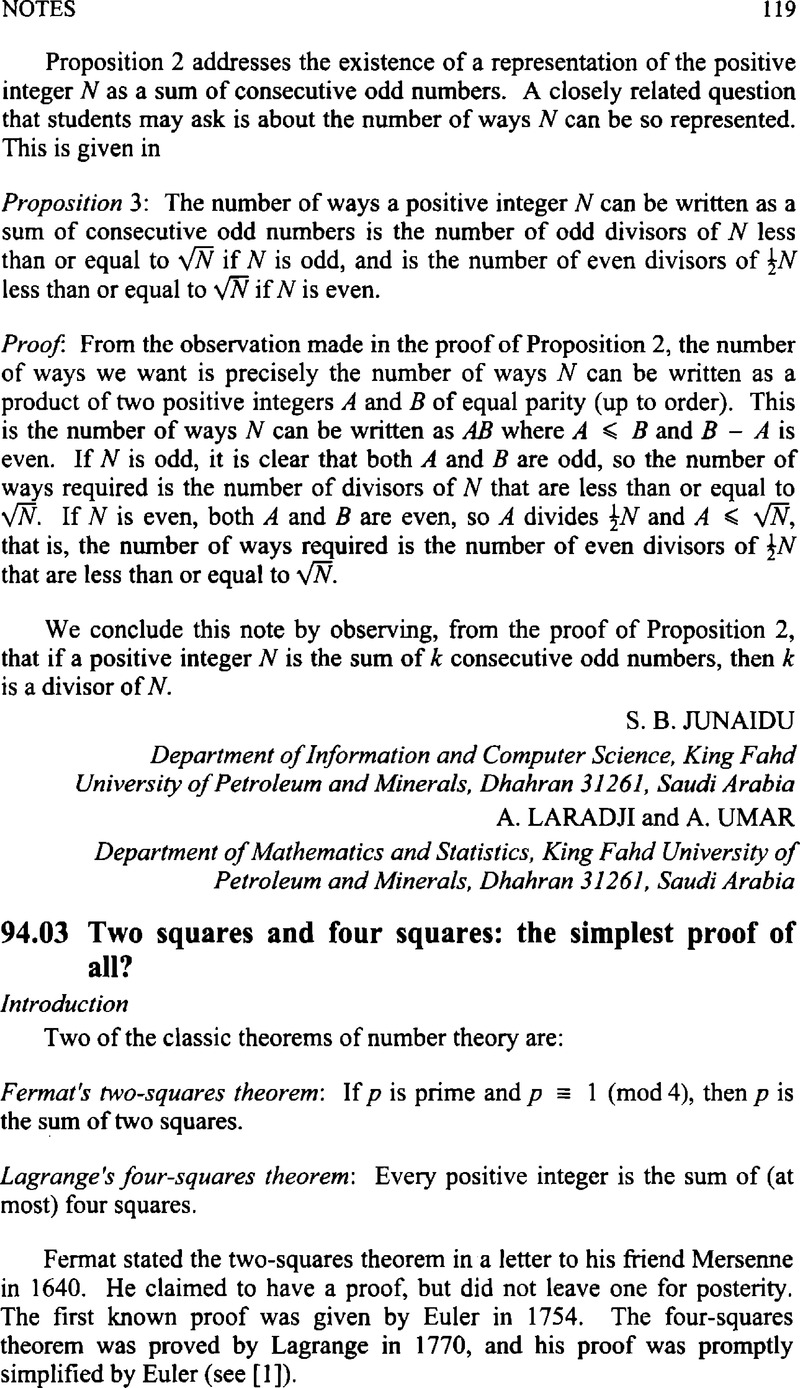Crossref Citations
This article has been cited by the following publications. This list is generated based on data provided by Crossref.
Rickey, V.
2017.
Research in History and Philosophy of Mathematics.
p.
97.
Williams, Kenneth S.
2018.
Everything You Wanted To Know About ax2+by2+cz2+dt2 But Were Afraid To Ask.
The American Mathematical Monthly,
Vol. 125,
Issue. 9,
p.
797.
Jameson, G. J. O.
2019.
103.32 More on the gaps between sums of two squares.
The Mathematical Gazette,
Vol. 103,
Issue. 558,
p.
499.


